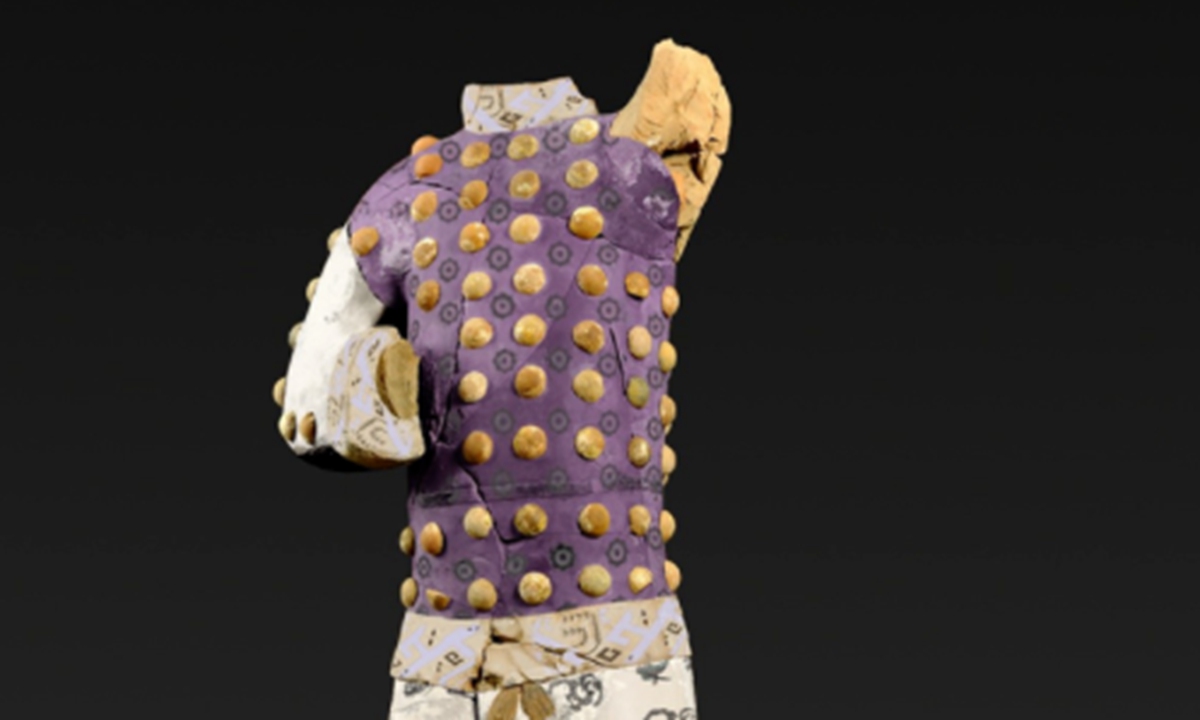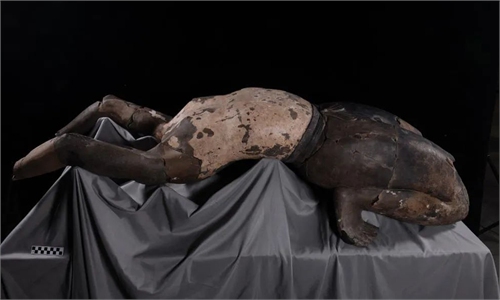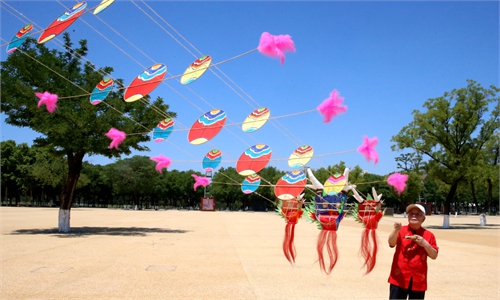ARTS / ART
Terracotta performer shows its colors at Emperor Qinshihuang’s Mausoleum Site Museum

An picture of the terracotta performer revealed by Emperor Qinshihuang's Mausoleum Site Museum Photo:Sina Weibo
A well-preserved terracotta performer that has retained much of its original paint was revealed by the Emperor Qinshihuang's Mausoleum Site Museum in Xi'an, Northwest China's Shaanxi Province on Wednesday as part of the updates on the latest research findings.Still retaining exquisitely colored patterns such as octagon-suns, clouds and grass-leaf patterns in black, white, yellow and purple, the Qin Dynasty (221BC-206BC) "No.4" terracotta performer is, in terms of color, the best-preserved statuette discovered at the site so far.
Zhou Yang, leader of a collaborative project between the Emperor Qinshihuang's Mausoleum Site Museum and the China National Silk Museum to replicate No.4's outfit, told the Global Times that the outfit depicted by the figurine would have been made from silk as during the Qin and Han (206BC-AD220) dynasties most clothing with colorful exquisite patterns were made from this material.
As such, the figurine is an excellent example showing China's long history of silk. Zhou also noted that the discovery holds value for the future study of Qin Dynasty clothing.
The collaborative project used Jacquard weaves to restore the terracotta performer's upper outer garment, belt and collar.
The updates on the findings related to Statue No.4 came after the revelation in early July of Statue "No.28," a terracotta acrobat whose body is twisted in an unusual position.
The unusual position of Statue No.28, which depicts a kneeling person leaning backwards so that their back touches the ground, stunned researchers. The discovery also provided a valuable clue to its creator as three clear fingerprints roughly 3.8 centimeters wide were found on its body, which led experts to posit that the craftsmen must have been in their teens.
These terracotta performers were discovered in a pit in the southeast section of the mausoleum site. The pit was first excavated in 1999 and has so far produced more than 30 terracotta figurines.


